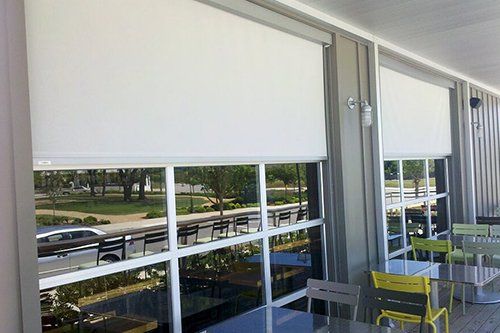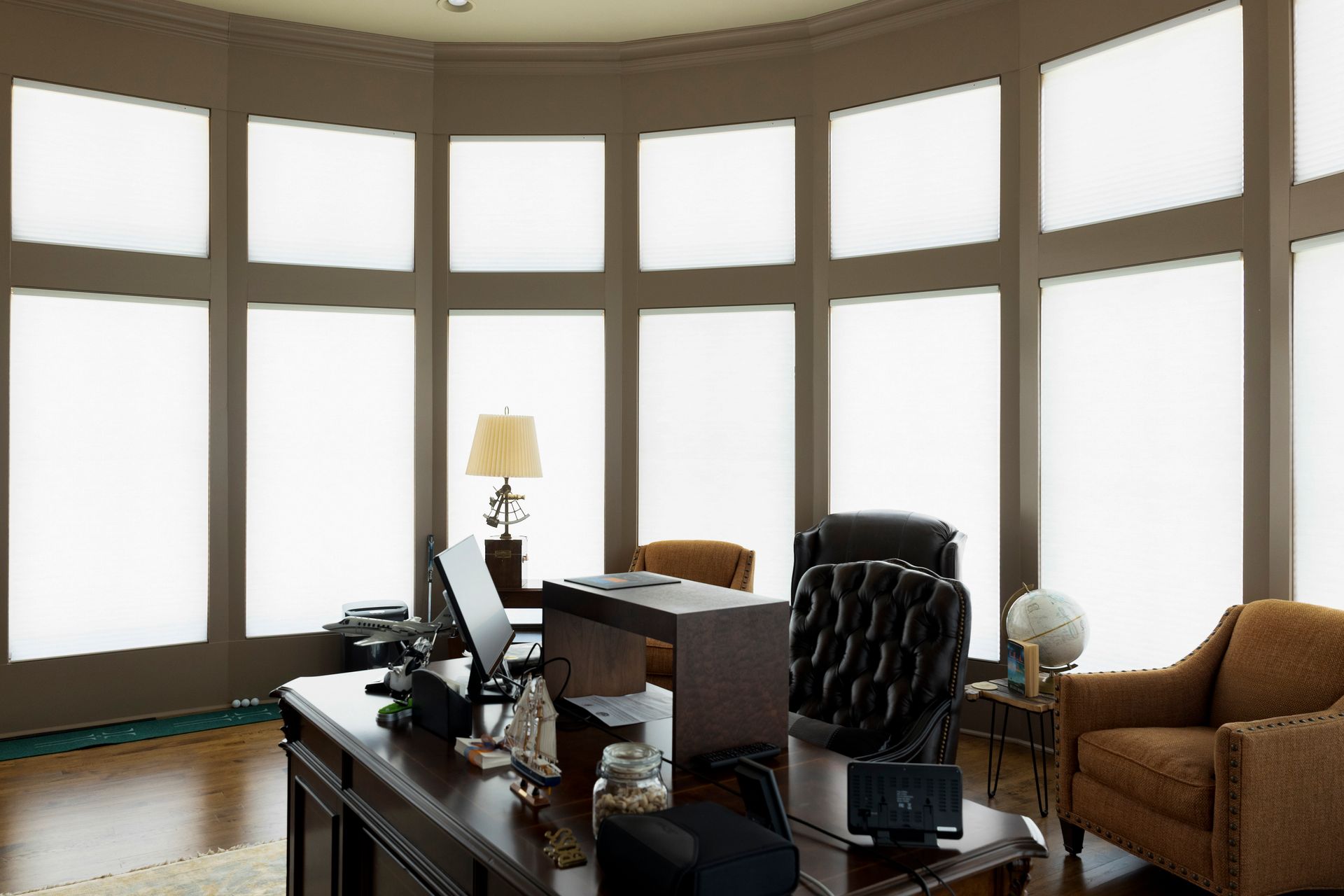Drapery is Back!
Drapery has been considered an elegant way to shade your windows for centuries. In fact, it's one of the oldest window technologies in the world. Drapes originate from tent design. Hand-woven fabric was then used for centuries to protect both windows and doors from cold drafts, and to provide privacy. Drapes were even used around beds to keep them warmer.
Drapes have been used to divide large rooms and as decorative insulation in stone buildings. When plate glass was invented, drapes became decor that could be seen from the outside as well. When industrial fabric production was introduced, drapes became popular in all homes, not just the palaces and estates of the nobility.
Today, draperies still provide insulation and beauty, often in layers of different fabric weights to create the perfect balance of light, privacy, insulation, and elegance.
Why Should You Hang Drapes?
Drapes provide a variety of benefits depending on which layers you choose. Simple curtains provide privacy and light control, but layered drapes allow you to shape the light and temperature environment of any room.
Light, Darkness, and Diffusion
The weight of each fabric allows you to take control of the light in the room. Light and filmy curtains can diffuse sunlight rather than blocking it, making the light more gentle and potentially blocking harmful rays. Medium fabric can darken a room without blocking all the sunlight, and heavy drapes or blackout curtains can make a room theater-dark on command.
Insulation in Summer and Winter
Heavy drapes provide valuable insulation in both summer and winter, but are favored in winter. The fabric prevents temperature changes from being conveyed between the window glass and the room.
Shaping the Room's Style
The length and style of your drapes becomes a powerful element of your interior design. Floor to ceiling drapes make a room feel taller, heavy fabrics add a timeless elegance and gravitas, while shorter and lighter drapes create a more airy and contemporary style.
What Types of Drapes Should You Look For?
How should you build your drapery designs? Drapes often look best when built with layers that create the effect you desire. The common drapery layers include:
- Filmy DrapesFilmy drapes provide light diffusion and privacy, allowing a room to be gently drenched in sunlight without those outside seeing into your room. They are often used as the innermost layer of drapes, facing the window.
- Black Out CurtainsBlack-out curtains are a popular middle layer, allowing you to completely block light from the room separate from the decorative drapery layers.
- Pleated DrapesPleated drapes are particularly rippled and look best when pulled back, but hold their shape when closed.
- Flat or Printed DrapesHeavy drapes can be flat yet richly textured fabric, embroidered, or printed. Printed drapes add a subtle visual texture, while flat drapes are solid splashes of color in your interior design.
2024 Drapery Trends
What trends are leading the return of draperies to intrior design? 2024 has enjoyed several delightful drapery trends that you can explore for yourself.
Two-Tone Drapes
Two-tone drapes are drapes made of two fabrics sewn together, one facing the outer window and one facing the inner room. The outer fabric provides a lovely accent for the inner fabric when the drapes are pulled back.
Bold Colors
Bold drapes of strong colors are the perfect way to add a splash of personality or coordinate with your chosen accent color contrasting with the paint colors in each room.
Sheer Curtains
Sheer curtains without additional layers have become a popular way to diffuse light into a sunny room, providing privacy and an ethereal glow of natural sunlight during the day.
Explore Drapes at Just Blinds
At JustBlinds, we're glad to introduce the latest in drapes, from trendy drapes with a lot of personality to classic drapes that bring elegance to any home design. We're experts in drapes as well as blinds, shutters and shades. Give us a call for a consultation.
Expert Advice by Just Blinds


